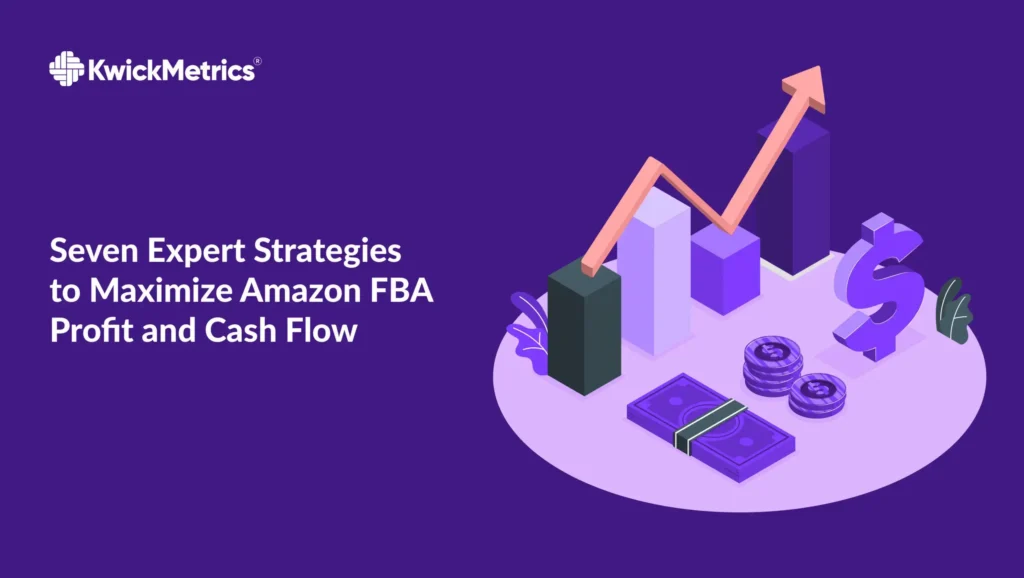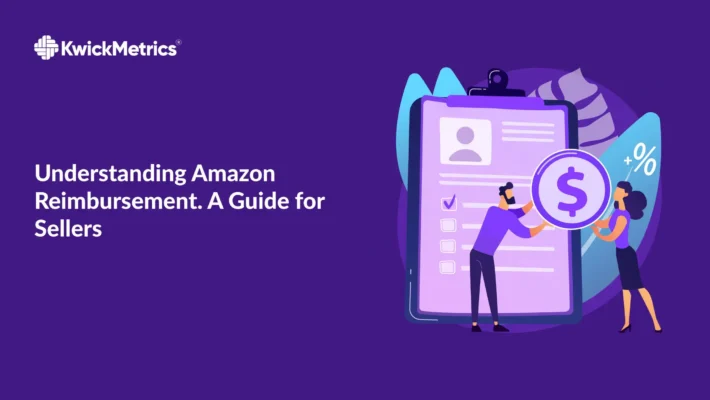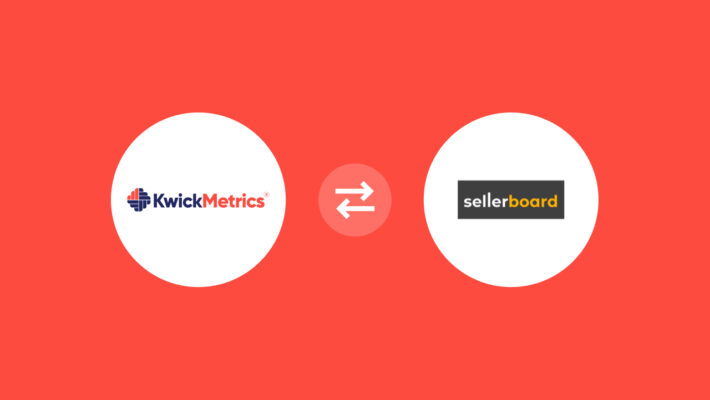7 Expert Strategies to Maximize Amazon FBA Profits and Cash Flow

Table of Contents
- Understanding the Basics of Amazon FBA
- Strategy 1: Choosing the Right Products for Amazon FBA
- Strategy 2: Pricing Strategies to Boost FBA Profits
- KwickMetrics - The Business Intelligence and Analytics Tool
- Strategy 3: FBA Inventory Management a Key to Success
- Strategy 4: FBA Quality Control and Customer Service
- Strategy 5: Optimizing Your Amazon Listings for Maximum Visibility
- Strategy 6: Marketing and Advertising for Increased Sales
- Strategy 7: Utilizing Amazon FBA Tools for Monitoring and Analyzing Performance Metrics
- Conclusion:
- Explore Our Features!
In the dynamic and ever-evolving world of e-commerce, Amazon’s Fulfillment by Amazon (FBA) service has emerged as a powerful platform for online sellers. This innovative service has revolutionized the way businesses operate, providing a comprehensive solution that takes care of storage, packaging, shipping, customer service, and returns.
To truly stand out from the crowd, maximize profits, and maintain a healthy cash flow. Sellers need to strategically plan and execute their business operations. It’s not just about selling a product; it’s about understanding the market, pricing products correctly, managing inventory efficiently, providing excellent customer service, and utilizing the right tools and services. This blog post is going to take you through the steps. We will delve into seven expert strategies that can help you maximize your Amazon FBA profits and cashflow and improve your Amazon ROI. These strategies are designed to provide you with a comprehensive understanding of how to succeed in the Amazon FBA platform. So, let’s get started on this exciting journey to maximize your Amazon FBA profit and cash flow.
Understanding the Basics of Amazon FBA
Amazon FBA, or Fulfillment by Amazon (FBA), is a service provided by Amazon that allows sellers to leverage Amazon’s robust distribution network and customer base. When you sell through Amazon FBA, your products are stored in Amazon’s fulfillment centers. Amazon takes care of the storage, packaging, and shipping of products, handles customer service, and manages returns on behalf of the sellers.
This model allows businesses to scale quickly as they can reach a global audience and do not have to worry about the logistics of storing and shipping products. It also provides sellers with the benefit of Amazon’s customer service and returns handling, freeing up time for sellers to focus on other aspects of their business.
However, while Amazon FBA offers numerous advantages, it also comes with its own set of challenges. Sellers need to manage their inventory effectively, ensure their products meet Amazon’s standards, and navigate the competitive marketplace. This is where strategic planning and the use of Amazon analytics tools come into play. These tools can provide valuable insights to help sellers make informed decisions, optimize their operations, and ultimately, maximize their profits and cash flow.
Strategy 1: Choosing the Right Products for Amazon FBA
Choosing the right products to sell is the first and one of the most crucial steps in maximizing your Amazon FBA profits and cash flow. The products you choose to sell on Amazon can significantly impact your sales volume, profit margins, and overall business growth. Here are some key factors to consider:
1. Demand: Look for products that have a high demand in the market. You can use Amazon’s Best Sellers list, Google Trends, and keyword research tools to identify popular products or niches.
2. Competition: While high-demand products are desirable, they often come with high competition. Try to find a balance between demand and competition. Look for things that are in high demand but with less competition.
3. Profitability: Consider the profitability of the product. Calculate the potential profit margin by subtracting all costs (including product cost, shipping, Amazon fees, etc.) from the selling price.
4. Product Size and Weight: The product’s size and weight might have a major impact on your shipping and storage charges. Smaller, lighter products are often less expensive to ship and store.
5. Seasonality: Some products may sell well during certain seasons but may have low demand during the rest of the year. Consider the seasonality of the product and how it might affect your cash flow and inventory management.
6. Quality and Reviews: Selling high-quality products can lead to positive reviews, which can boost your product ranking and increase sales. Always ensure that your products meet Amazon’s quality standards.
Key Takeaway:
Product selection is not a one-time task. Market trends change, and what works today might not work tomorrow. Continually monitor the market, analyze your sales data using Amazon sales analytics adjust your product selection strategy as needed. This continuous optimization can help you stay ahead of the competition and maximize your Amazon FBA profits and cash flow.
Strategy 2: Pricing Strategies to Boost FBA Profits
Pricing your products correctly is a critical aspect of maximizing your Amazon FBA profits and cash flow. The price of your product can significantly impact your sales volume, profit margins, and competitiveness. Consider the following pricing strategies:
1. Competitive Pricing: Monitor your competitors’ prices and adjust your prices accordingly. If your product is priced too high compared to similar products, you may lose potential customers. If it’s priced too low, you might be leaving money on the table. Amazon sales data analysis tools can help you track competitor pricing and trends.
2. Value-Based Pricing: Price your products based on the value they provide to the customer. If your product offers unique features or benefits that your competitors don’t, you may be able to charge a premium price.
3. Volume Pricing: Consider offering discounts for purchasing larger quantities. This can encourage customers to buy more and can help you move inventory faster.
4. Dynamic Pricing: Prices can be adjusted based on various factors such as demand, season, inventory levels, and competitor prices. Amazon seller analytics software can help you implement dynamic pricing by providing real-time data and trends.
5. Psychological Pricing: Pricing products at Rs.99 instead of Rs100, for example, can make the price seem lower in the customer’s mind.
Key Takeaway:
The goal is to find the sweet spot where the price is attractive to customers, yet still profitable for you. Continually monitor and adjust your pricing strategy to stay competitive and maximize your profits and cash flow.
KwickMetrics - The Business Intelligence and Analytics Tool
Explore 14-day free trial! No credit card required, cancel at any time.
Strategy 3: FBA Inventory Management a Key to Success
FBA Inventory management is a critical aspect of running a successful Amazon FBA business. Effective inventory management can help you avoid stockouts and excess inventory, both of which can negatively impact your profits and cash flow. Here are some strategies to consider:
1. Demand Forecasting: Use historical sales data and market trends to predict future demand for your products.
2. Reorder Point Formula: Determine the reorder point for each product. This is the point at which you should reorder a product to avoid stockouts while minimizing storage costs.
3. Safety Stock: Keep a safety stock to protect against unexpected demand or supply delays. The right amount of safety stock depends on the predictability of demand and the lead time of your suppliers.
4. FBA Inventory Age: Monitor your FBA Inventory Age to avoid long-term storage fees. Amazon charges long-term storage fees for items stored in an Amazon fulfillment center for more than 365 days.
5. Inventory Performance Index (IPI): Track your IPI score. Amazon measures your inventory performance with the IPI score. A high IPI score can give you access to additional storage space in Amazon’s fulfillment centers.
6. Automated Repricing Tools: Consider using automated repricing tools. These tools can help you adjust your prices based on your inventory levels, helping you move inventory faster when needed.
Key Takeaway:
Inventory Management is like organizing your closet. You need to know what’s in there, how many of each item you have, and when you need to buy more. If your closet is too full, it’s hard to find what you need. But if it’s too empty, you might not have anything to wear! So, keep track of your items, make sure you have enough but not too much, and always be ready to restock when needed. This way, you’ll never miss a sale because you ran out of stock, and you won’t waste money storing items that aren’t selling. It’s all about balance!
Strategy 4: FBA Quality Control and Customer Service
Quality Control is akin to the final inspection in a manufacturing process, ensuring that the product meets the required standards and is free from defects. In the context of Amazon FBA, it involves inspecting the products before they are shipped to Amazon’s fulfillment centers. This step is crucial as it can prevent negative customer reviews and returns due to faulty products.
Customer Service, on the other hand, is about ensuring customer satisfaction. It involves responding promptly to customer inquiries, resolving issues efficiently, and providing after-sales support. Excellent customer service can lead to positive customer reviews, repeat purchases, and customer loyalty, all of which are vital for maximizing profits and cash flow in your Amazon FBA business. Remember, a happy and satisfied customer is a loyal customer.
Strategy 5: Optimizing Your Amazon Listings for Maximum Visibility
Optimizing your Amazon listings is like setting up a billboard in a busy city. You want to make sure it’s eye-catching, provides the right information, and appeals to the right audience. Here’s how you can do it:
1. Keyword Optimization: Include relevant keywords in the title, description, and backend keywords of your product. This can increase the visibility of your product in search results.
2. High-Quality Images: Use high-quality images that accurately represent your product. This can help attract customers and reduce returns.
3. Provide Detailed Product Descriptions: Provide detailed and exact product descriptions. Highlight your product’s qualities and benefits.
4. Competitive Pricing: Set a competitive price for your products. Before making a purchase, customers frequently research pricing.
5. Positive Reviews: Encourage satisfied customers to leave positive reviews. This can boost your product ranking and attract more customers.
6. Fulfillment by Amazon (FBA): Consider using Amazon FBA. Products fulfilled by Amazon are often favored by the Amazon algorithm.
Key Takeaway:
Optimizing your Amazon listings involves using the right keywords, providing detailed product descriptions, using high-quality images, pricing competitively, and encouraging positive customer reviews. It’s all about making your products more visible and attractive to customers.
Strategy 6: Marketing and Advertising for Increased Sales
Marketing and Advertising are like the megaphones of your business. They help amplify your product’s visibility to potential customers. Here’s how you can leverage them:
1. Amazon Advertising: Amazon offers various advertising solutions like Sponsored Products and Sponsored Brands that can help increase your product’s visibility.
2. External Marketing: Don’t limit yourself to Amazon. Use social media, email marketing, and SEO to drive traffic to your Amazon listings.
3. Promotions and Discounts: Run promotions and offer discounts to attract customers and boost sales.
4. Product Bundling: Bundle related products together. This not only increases the perceived value but also the average order value.
Strategy 7: Utilizing Amazon FBA Tools for Monitoring and Analyzing Performance Metrics
Monitoring and analyzing performance metrics are like a health check-up for your Amazon FBA business. It helps you understand the current state of your business and guides your future strategies. Here’s how you can do it:
1. Sales Analysis: Regularly review your sales data. It helps you identify which products are performing well and which ones need improvement.
2. Profit Analysis: Keep a close eye on your profits Analysis. Consider all costs, including product cost, shipping, and fees, to calculate your actual profit.
3. Customer Behaviour Analysis: Understand your customers’ behavior. Analyze their search patterns and buying habits to optimize your product listings and marketing strategies.
4. Inventory Management: Maintain a record of your inventory levels. Efficient inventory management can assist you in avoiding stockouts and excess inventory, both of which can impact your profits and cash flow.
Key Takeaway:
Monitoring and analyzing performance metrics help you understand your business’s health. Regularly reviewing sales data, profits, customer behavior, and inventory levels can guide your decision-making and maximize your Amazon FBA profits and cash flow. It’s all about knowing your business inside out!
Conclusion:
Mastering Amazon FBA is a journey that demands a keen understanding of your business data. By employing advanced amazon analytics tools, and business reports, and utilizing seller data effectively, you can propel your Amazon business to new heights. The key lies in staying informed, adapting to changes, and strategically leveraging the wealth of data at your disposal. As the e-commerce landscape continues to evolve, amazon sellers equipped with powerful analytics tools and insights will undoubtedly lead the way in maximizing profits and cash flow on Amazon.
Remember, every Amazon FBA business is unique, so what works for one seller might not work for another. Experiment with different strategies, track your results and adjust your approach as needed. Good luck!



